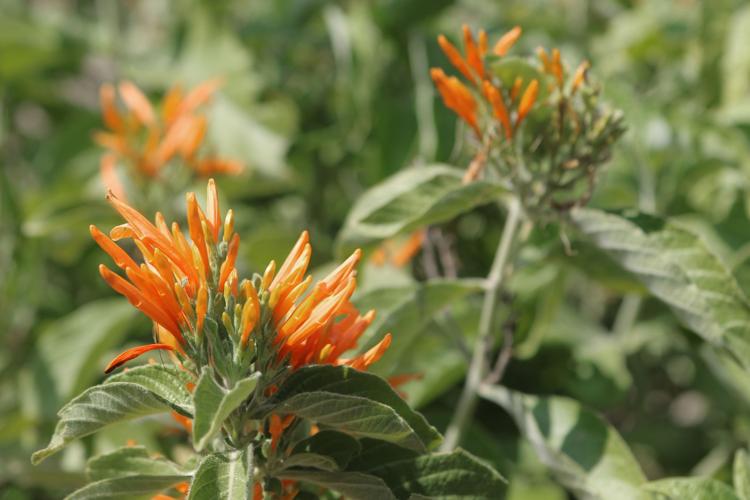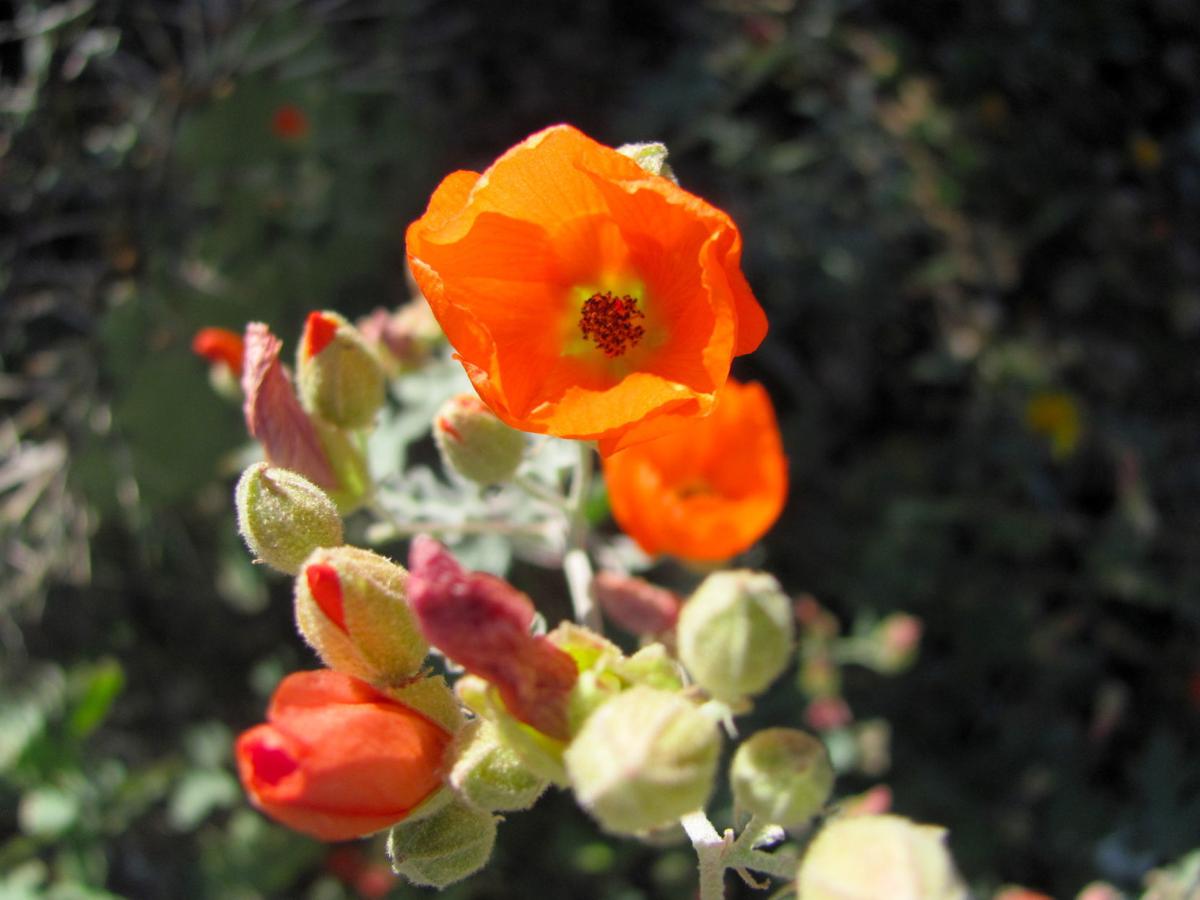
Justicia spicigera (Mexican honeysuckle) has larger leaves than other desert-flowering plants.
Fall is the perfect time to plant winter-blooming flowers and shrubs. Not only does this provide you with year-round color, but it also functions as a food source for pollinators during a time when food is scarce.
The following is a selection of plants you can look for in local nurseries to add to your garden. As always, ask about pesticide use before you buy anything, since plants that have been treated with systemic pesticides will be toxic to your pollinators (and many other animals, too).
In general, native plants may look a bit stressed when you first plant them. Don’t worry, chances are they will recover. Water new plants twice a week to start with, then gradually decrease watering frequency over two months to about once every two to three weeks (assuming no rain).
You can adjust your watering schedule as needed for best blooms — some areas are sunnier and hotter, and will need more watering. Timing of blooms will vary based on soil, location and watering, so while these plants should bloom at the times indicated, you may experience some variation at your site.
Mexican honeysuckle (Justicia spicigera): This plant likes to bloom in mid-winter with tubular orange flowers. Plant in full sun for best flowering. It can die back if temperatures get much lower than 25 F but will regrow once soils warm up.
Gooding’s verbena (Glandularia gooddingii): Another year-round bloomer, this plant has beautiful purple flowers and is a great alternative to purple lantana. Plants usually last one to two years but will reseed readily.
Globemallow (Sphaeralcea ambigua): Globemallows grow to about a 3-foot wide and tall mound. They come in a variety of colors, including deep orange and light purple or pink. They like full sun, and can bloom throughout the year. Bees love these plants.
Lemmon’s marigold (Tagetes lemmonii): This small shrub grows in a mounding form to about 3-4 feet. It’s covered in yellow flowers when blooming. Attracts bees and butterflies; birds like the seeds.
Bush dalea (Dalea pulchra): Also known as indigo bush, this beautiful native has lavender-like flowers late in winter into spring. Great for pollinators, it’s also a nitrogen-fixer. It’s usually under 2 feet tall. The black dalea (Dalea frutescens) is a related plant that also provides winter bloom.
Baja fairy duster (Calliandra californica): This near-native blooms nearly all year round with beautiful feathery bright red blooms. It originates from Baja, California, but is hardy in our climate. It can grow up to 4-5 feet tall. It’s a nitrogen fixer, so don’t fertilize it. A smaller, native version, the pink fairy duster (Calliandra eriophylla), also attracts butterflies and hummingbirds.
Parry’s Penstemon (Penstemon parryi): This perennial has lovely hot pink tubular flowers that hummingbirds love. It prefers afternoon shade. Plant in large clusters for a great show of color. You can also plant it from seeds in the fall, but they likely won’t flower until fully grown by the next year.






